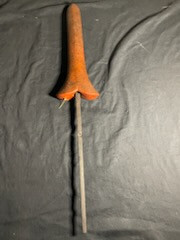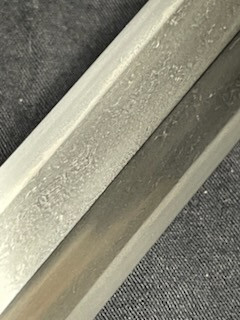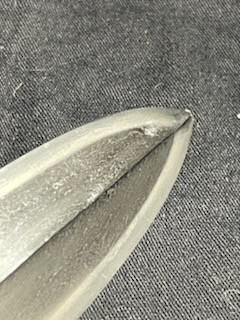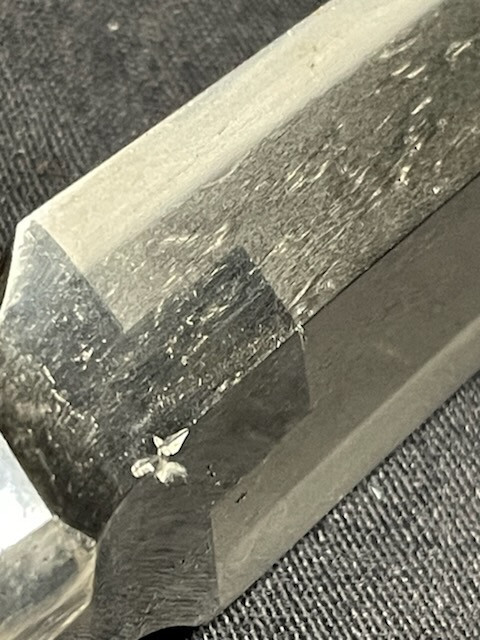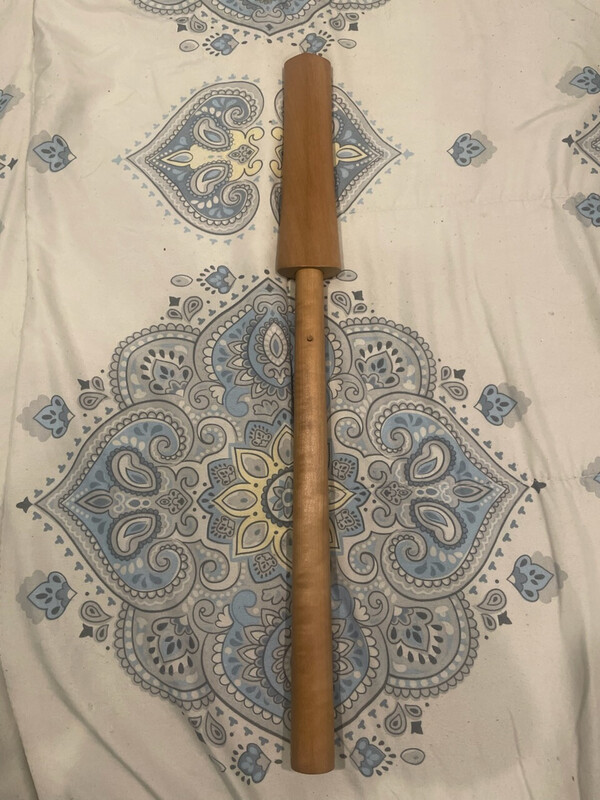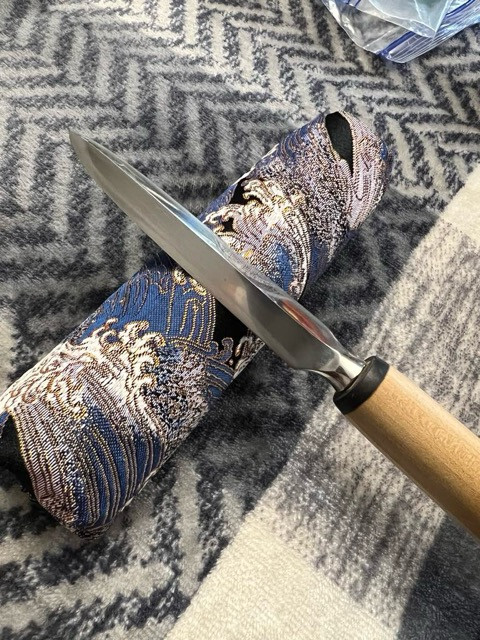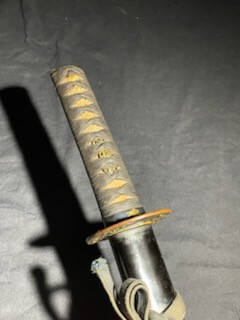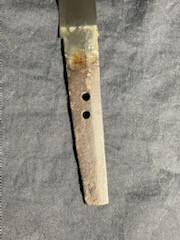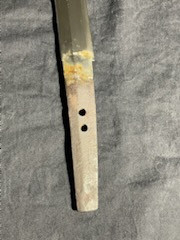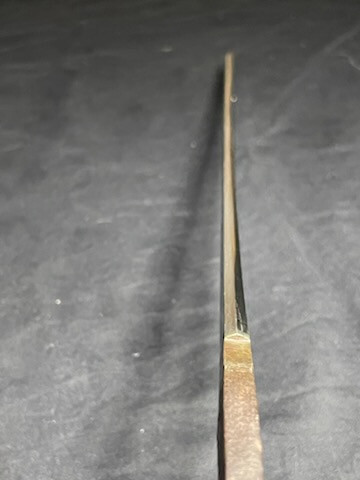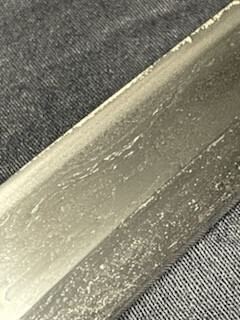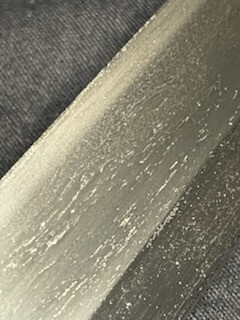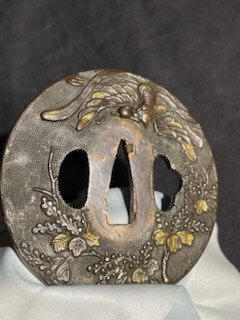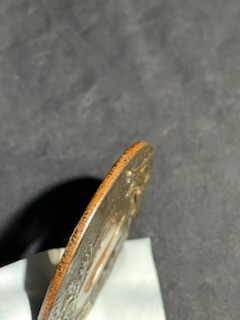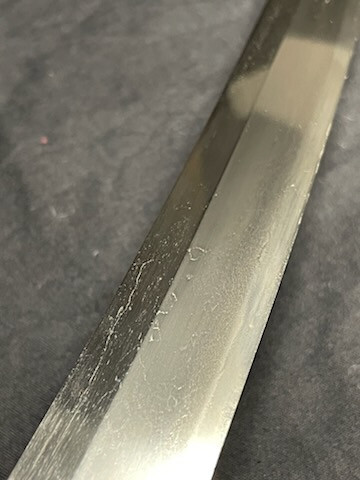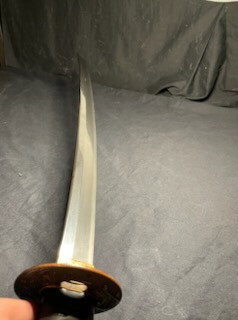
ChrisW
Members-
Posts
2,330 -
Joined
-
Last visited
-
Days Won
7
Content Type
Profiles
Forums
Events
Store
Downloads
Gallery
Everything posted by ChrisW
-
A beautiful piece Curran!
-
I could see an argument for either, but having been dealing with a lot of Jumyo lately, I would agree that this looks like a Muromachi Jumyo den blade. The gunome/togari, the higaki yasurime, the longer nakago, and the styling of the boshi all point towards this. Early Kanemoto (2nd and later) lineage was a bit more formulaic with their sanbonsugi, which I am not seeing so much here; unless the wear is significant and the hamon has lost much of its original form. This might be a fun one to consider for Shinsa in my opinion! If you do pursue that, please let us know the results!
-
The Muromachi period is 1336 to 1573. Kirill believes it belongs to the Bizen school, which is one of the five major blacksmithing traditions in Japan. Kaga is a minor school, which does not belong to any of the five large schools. Utsuri is a secondary shadowy "hamon" that follows above the hamon itself and is usually a key point in attributing it to Bizen school in the Muromachi period typically. The hamon is the temperline that you're seeing on the body of the blade. It represents the hardened portion of the blade itself, from the edge to the wavy pattern you see in the body of the blade. The nakago reminds me of Kaga school blades, so my initial impression is that this is one of those.
-
Thank you for the compliment! I try to make sure that the listing, communication, and shipping is done the way I would want it to be done for me.
-
World War II Sword, Maybe?
ChrisW replied to garbage finds's topic in General Nihonto Related Discussion
I wouldn't say its not an artifact. It is from WWII, which is still a good amount of time for something to survive. It certainly deserves care and respect. As for the cleaning of the tsuka, I would say its probably not safe to use isopropyl alcohol on the silk handle. I've never done it, so I am not sure. I will leave this up to my betters to respond to that query. -
World War II Sword, Maybe?
ChrisW replied to garbage finds's topic in General Nihonto Related Discussion
As Brian said! Also be sure to wipe in one direction in a singular swipe, do not do circular motions or back and forth as this will drag contaminants over the surface of the blade moreso than a singular swipe will. As for the isopropyl alcohol, look for 99.9% pure, do not buy any that is cut with water. -
$50 donated. Thanks to Brian and everyone!
-
Sword is sold! Please archive, thanks to everyone! I will be donating $50 to the board.
-
Reduced to $1800 for all 19, $300 will still go to the board if sold here.
-
Reduced to $1300 + shipping for quicker sale. A great chance to add a very beautiful koto omi yari with battle scars!
-
Yamato Daijo Fujiwara Masanori "Makura" Yari
ChrisW replied to ChrisW's topic in Swords and Edged Weapons
Reduced to $1100 + shipping for quicker sale. -
I did not receive one, but I will send you a PM.
-
Mumei Katana info request, age, school and nakago ID
ChrisW replied to Fathergascan's topic in Nihonto
Then you're in luck, there is a Texas Token Kai I believe. Search the forum and you should be able to find them! -
This would make an excellent blade for a beginner because it has a lot of activity, it is from one of the better-known Yamato schools, and would be an easy candidate to receive Hozon. The blade is in appreciable condition with solid koshirae. Don't let this one slip by!
-
Mumei Katana info request, age, school and nakago ID
ChrisW replied to Fathergascan's topic in Nihonto
You'll have to share what state you reside in to find someone closeby or the nearest token kai! If you're in the midwest, I suggest myself/the Indiana Token Kai. If its on the eastern seaboard, then the NY Token Kai. We have members/token kai scattered throughout the country! -
Mumei Katana info request, age, school and nakago ID
ChrisW replied to Fathergascan's topic in Nihonto
If you live near someone on the board, you should get some in person opinions! Or visit a token kai meeting. -
When a yari from the kubi to kissaki meets or exceeds 12 inches.
-
Hello again ladies and gentlemen, here is one more for the evening. Type (Tachi, Katana, Wakizashi, Tanto, Naginata, Other) : omi yari Ubu, Suriage or O-Suriage : Ubu Mei : (Mumei, Signature) : Signed two kanji Kanenori, by the workmanship, mainline Mino, one nakago-ana. Papered or not and by whom? : No Era/Age : Late Muromachi, circa 1530 Shirasaya, Koshirae or Bare Blade? : partial koshirae. Nagasa/Blade Length : 28cm or just over 11 inches, with kubi it is 12 inches Sori : none Hamon Type : Chu-suguha Jihada : Running itame with mokume and masame elements. Other Hataraki Visible : Kinsuji, inazuma. This blade has A LOT of activity and is an eyeful! Flaws : a few small ware, one small fukure midway on one side, five kirikomi, a few pits. Sword Location : Indiana, USA Will ship to : USA primarily, international contingent on laws of destination country. Payment Methods Accepted : Paypal, Cashapp. Shipping options discussed at time of purchase. Price and Currency : $1400 USD or reasonable offers. Other Info and Full Description : Comes in a saya. The smith is likely to be one of the mainline Mino Kanenori of the late Muromachi period judging by the workmanship. This is a very petite 'omi yari' as with the kubi included, it just comes in at 12". Despite its size, it has FIVE kirikomi or 'battle scars' and is in great condition for its age. Another lovely yari in fine condition for its age. It sports a ryo-shinogi (double ridge) which is rather uncommon provides for a very distinctive look compared to many other yari. Enjoy!
-
Hello again ladies and gentlemen, I am submitting another item for sale here on the board. Type (Tachi, Katana, Wakizashi, Tanto, Naginata, Other) : Yari Ubu, Suriage or O-Suriage : Ubu Mei : (Mumei, Signature) : Signed Yamato Daijo Fujiwara Masanori, the mei being filled in with gold lacquer, one nakago-ana. Papered or not and by whom? : No Era/Age : Early Edo, approx. 1600-1624 Shirasaya, Koshirae or Bare Blade? : in shirasaya. Nagasa/Blade Length : 16.2cm or just under 5 inches Sori : none Hamon Type : Chu-suguha Jihada : Dense itame/masame. Flaws : a few aesthetic scratches, a minor stain near the tip. Sword Location : Indiana, USA Will ship to : USA primarily, international contingent on laws of destination country. Payment Methods Accepted : Paypal, Cashapp. Shipping options discussed at time of purchase. Price and Currency : $1200 USD or reasonable offers. Other Info and Full Description : Comes in shirasaya. The smith Yamato Masanori worked from 1600 to 1624 and is a 50-point smith. This is the shodai in my opinion, as opposed to the nidai because yari made by shodai were done in a Hizen-esque style with the suguha/itame combination. The mei on this yari is infilled with gold lacquer that really does help make the mei pop in my opinion A very well-preserved makura or "pillow" yari with a very nice gold lacquer filled mei in shirasaya at a very nice price.
-
Open to reasonable offers.
-
Open to reasonable offers.
-
Hey guys, just submitting this for sale here on the board. If it sells here, I'll pay $50 out of the final price to the board. Thanks to Brian for providing a solid experience for us sellers! Type (Tachi, Katana, Wakizashi, Tanto, Naginata, Other) : Wakizashi Ubu, Suriage or O-Suriage : Suriage Mei : (Mumei, Signature) : Mumei, two nakago-ana. Papered or not and by whom? : No, but a copy of the torokusho. This blade is textbook Yamato Mihara school and I would be surprised if it was named otherwise. Era/Age : Muromachi, approx. 1420-1450 Shirasaya, Koshirae or Bare Blade? : in full koshirae Nagasa/Blade Length : 53.3cm or 20.98 inches, around 24" originally. Sori : 1.3cm (0.51 inches) Hamon Type : Chu-suguha Jihada : Dense ko-itame, with some mokume and masame elements. Other Hataraki Visible : Kinsuji, inazuma, slight hakikake in the boshi, and more activity than I can remember the terminology for! This one is a real looker! Flaws : a few aesthetic scratches, light dimpling/staining on the edge for a few inches, stains under the habaki -- otherwise very clean and appreciable. Sword Location : Indiana, USA Will ship to : USA primarily, international contingent on laws of destination country. Payment Methods Accepted : Paypal, Cashapp. Shipping options discussed at time of purchase. Price and Currency : SOLD USD or reasonable offers. Will only take up to $X in trade value. Other Info and Full Description : Comes in full koshirae with fine shakudo and gold trimmed elements. The fuchi shows a gold rabbit leaping over shakudo waves, combined with the dual mon menuki and the restrained elements of the koshirae, it leads me to believe this was meant as a bridal/wedding gift between two clans. The rabbit leaping over waves is a common fertility theme. Tsuba is a floral motif done in copper with gold highlights. Habaki is a gold-plated two piece. Saya is black lacquer in good condition, has sageo attached in a nice ornamental knot. A copy of the torokusho is rubber-banded onto the saya. This is a lovely blade for sale at a more than reasonable price. It is priced for far less than what you would pay to get a blade of this size polished, plus it comes in full koshirae!
-
New group rate is $1900 for all 19 with $300 of that still going to the board. Cheers!






